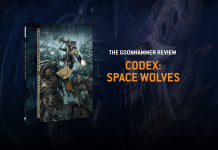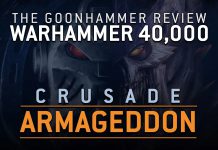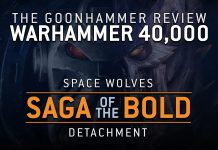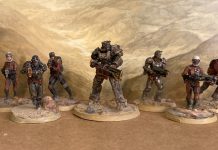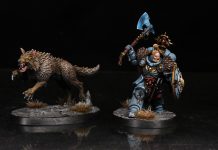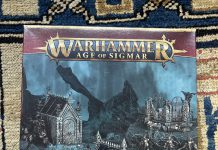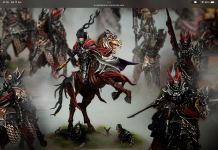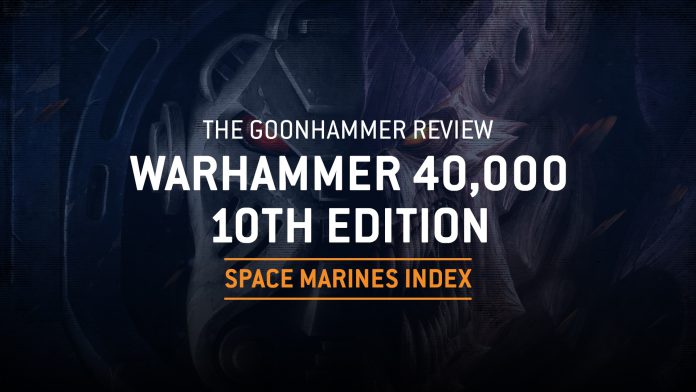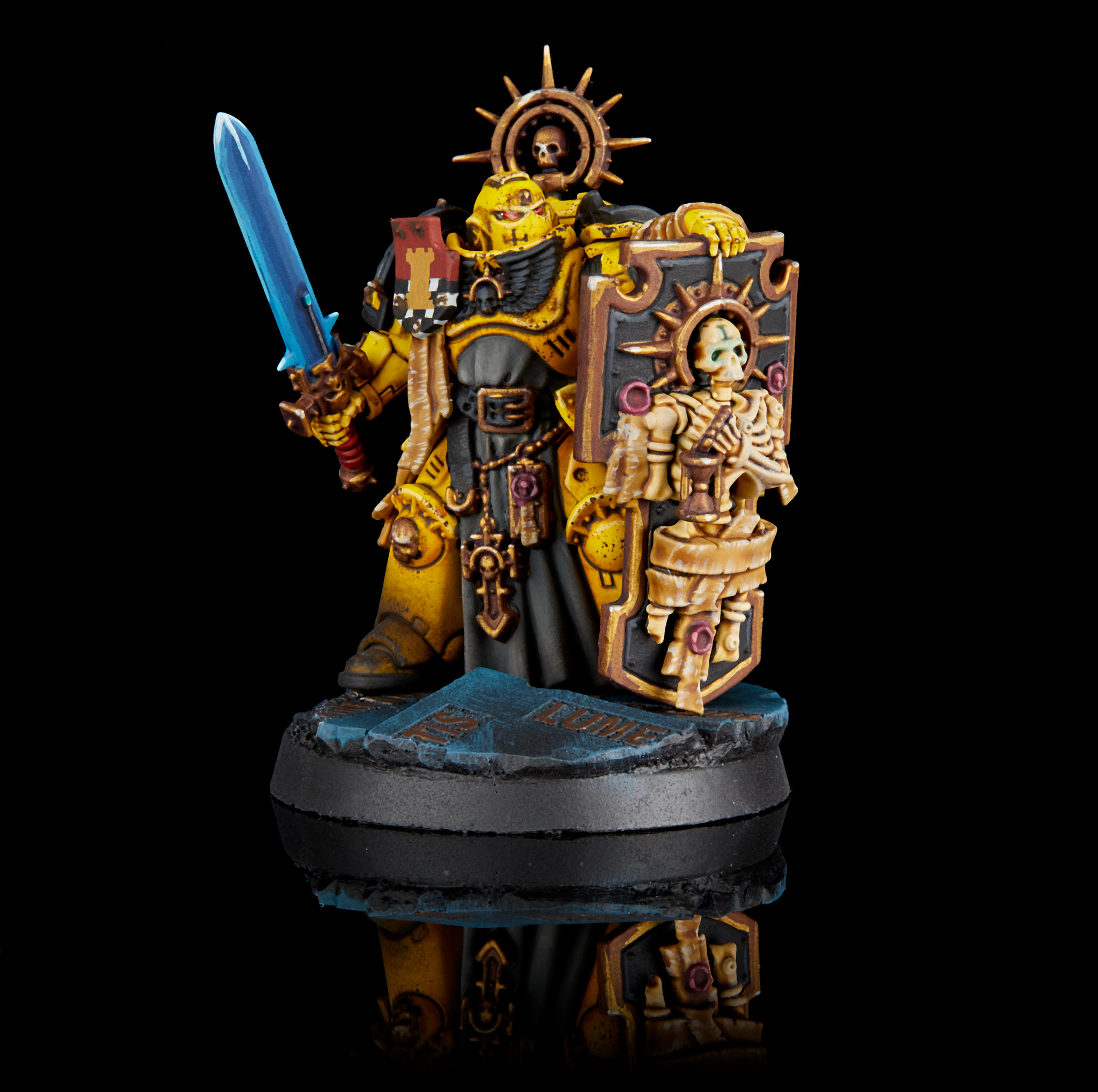The Space Marines are the iconic faction of Warhammer 40,000, and take their traditional place in the launch box facing off against the Tyranids of Hive Fleet Leviathan. Their index is the biggest of the bunch, packed full of datasheets for (nearly) every unit in their gigantic range, plus some new ones like the Ballistus Dreadnought and the Apothecary Biologis.
Not only is the faction huge in its own right, but there are a number of sub-factions based on their most famous Chapters. It’s worth highlighting this right at the start, because 10th edition treats sub-factions in a different way to how 8th and especially 9th edition did, and this is most impactful for Space Marines. At the beginning of 8th edition most Marines were in the main Codex and then a few other Chapters had their own completely separate books. This changed after the second Codex: Space Marines in late 8th edition, from which point on there was an additional range of Chapter Supplements – 10 of them! – covering the 9 ‘First Founding’ Chapters, plus Deathwatch. These supplements each contained a unique set of faction rules as well as extra Stratagems, Relics, and datasheets – though some (Space Wolves) had more of that last thing than others (Iron Hands) – but you still needed the base Codex: Space Marines to play them, and used nearly everything in it. All of these rules piled on top of each other to combine in various different ways, and meant that different Chapters played radically differently.
That situation is substantially different in 10th. The majority of the supplements have gone away and their characters are folded back into this index, leaving just the five most different Chapters – Blood Angels, Dark Angels, Space Wolves, Black Templars and Deathwatch – with indexes of their own. Unlike early 8th edition, those factions are not standalone – you will still need the Space Marines one for most of your unit choices, and they all share the “Oaths of Moment” faction rule below. There’s also nothing stopping you from using the Space Marines’ detachment (the Gladius Task Force which we’ll talk about below) and playing a Blood Angels army (including your unique datasheets, like Sanguinary Guard) which uses it and its rules, but you don’t stack the rest of the stuff on top. You are, however, prevented from mixing units from across different Chapters (or combining them with some of the Epic Heroes in here – such datasheets have a second Faction keyword alongside Adeptus Astartes (e.g. Ultramarines)), and your army cannot contain units with more than one different Chapter keyword.
The various Chapter indexes will get their own articles at a later date, but for now let’s focus on the one we’re here to talk about – Index: Space Marines.
Before we begin we’d like to thank Games Workshop for providing us with a review copy of the Index for review purposes.

Faction Rule
The Space Marine faction rule is Oaths of Moment, effectively a re-jigged Seal of Oath from the 8th edition Ultramarines supplement. In each of your Command phases, you can select one enemy unit; until your next Command phase all your units re-roll Hit rolls and Wound rolls against that unit. It’s a hugely powerful ability which significantly increases the baseline effectiveness of your units, especially considering the twin impacts of higher Toughness in the game (where re-rolling Wounds is hugely valuable for low- and mid-Strength attacks to make an impact) and the number of effects which rely on a Critical Hit or Critical Wound to work. In the 10th edition structure, this is the rule that will carry over consistently no matter which detachment you’re playing – and that’s great, because it’s a really useful one which will get you results in pretty much any circumstances.
Detachment Rules
The Space Marines’ Index detachment is the Gladius Task Force, a set-up which is meant to emulate the flexible fighting style of a Codex-following Space Marine Chapter at its adaptable, tools-for-any-situation best.
Detachment Ability
The Detachment rule is Combat Doctrines, a familiar rule for Space Marines. The 10th edition version takes a radical new form – along with picking an Oaths target at the start of your Command phase, you can (but don’t have to) pick a Combat Doctrine to apply to your army. Its effects are active for all of your ADEPTUS ASTARTES units until the start of your next Command phase.
The reason it’s important to flag that you don’t have to pick a Doctrine is because there’s only three of them – the classic Devastator, Tactical, and Assault – and you can only use each one once per battle, so if you don’t need a specific Doctrine right now, you shouldn’t blow one just because. There are ways around this, as we’ll see in the Stratagems and Enhancements sections, but they’re much more limited in scope.
Each Doctrine unlocks a different capability for your units. In Devastator, your units can Advance and shoot, while in Assault they can Advance and charge. Tactical allows you to shoot and charge after you Fall Back. These are powerful effects which can significantly change what your army can do – either by putting you on the front foot for aggressive forward play in Assault or Devastator Doctrine, or by letting you rescue your units from a tight situation in Tactical – and applying them at the right time when they’ll have maximum impact for your army will play a significant role in playing this detachment well.
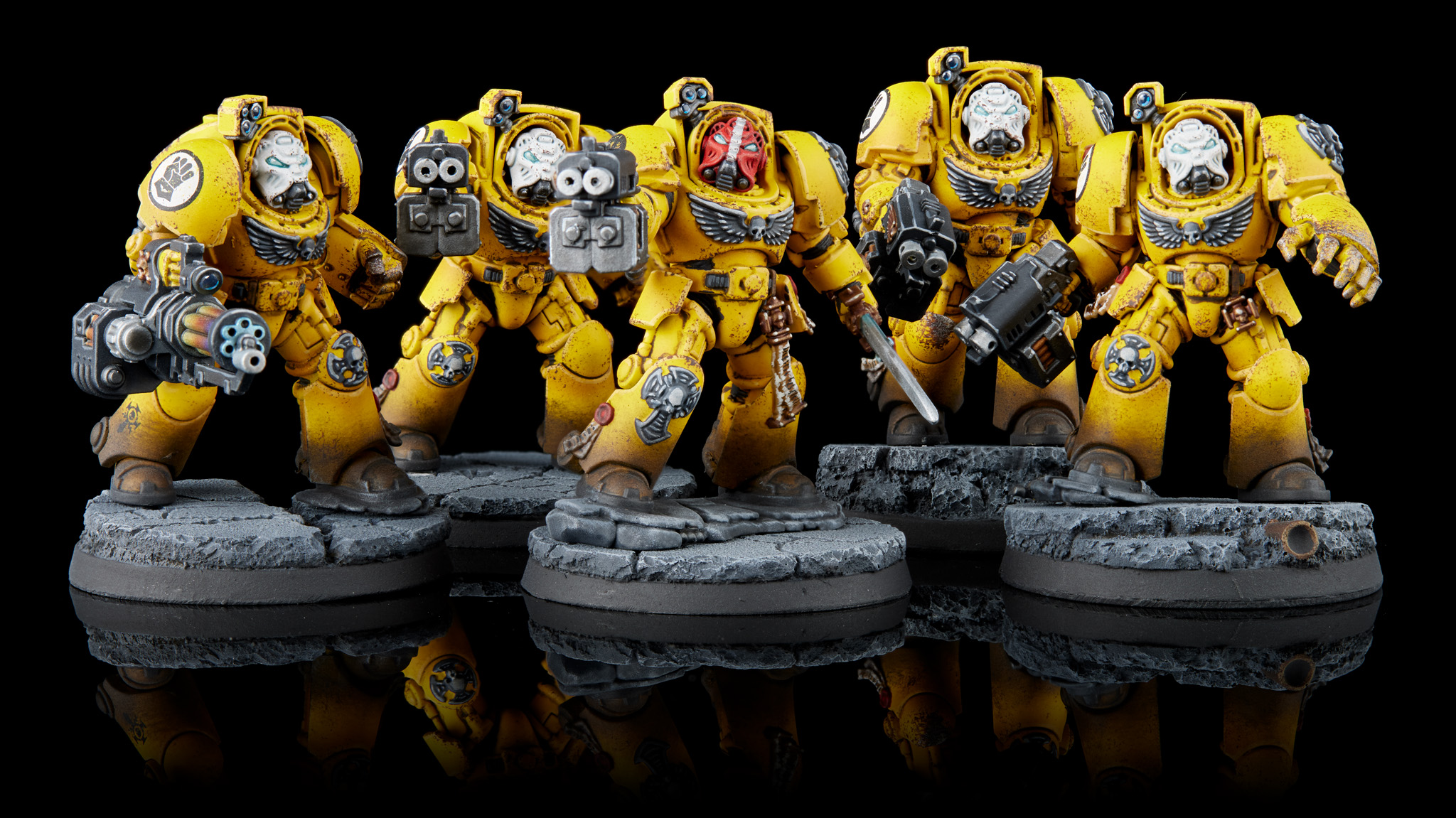
Enhancements
“Enhancements” replace the Relics and Warlord Traits of previous editions, combining the two things into a single set of upgrades which you can give to your CHARACTER models (importantly, given the wealth of them in this index, not to EPIC HERO models i.e. named characters).
There’s four to pick from in the Gladius Task Force – Artificer Armour, The Honour Vehement, Adept of the Codex, and Bolter Discipline. Artificer Armour is a straightforward upgrade for any character, giving them a 2+ save and a 5+ Feel No Pain – a significant defensive upgrade, particularly since many models which would have had a 2+ save in 9th edition (or trivially gotten one from a storm shield) now only have a 3+. Adept of the Codex is only for a CAPTAIN model, but it represents one of the ways to play with Doctrines – effectively what it allows you to do is to always select the Tactical Doctrine to be active for the bearer’s unit, even if you’ve already used it this game (though importantly you pick this instead of picking a Doctrine to be active generally – so you can’t e.g. pick Assault for everyone else and then Tactical for your Captain’s unit, it’s one or the other). The Honour Vehement buffs your model’s melee ability, while Bolter Discipline lets them give out SUSTAINED HITS 1 to a unit they join; both also interact with Doctrines, enhancing their effectiveness if the bearer is under the Assault Doctrine or the Devastator Doctrine respectively.
Stratagems
As well as the enhancements and Detachment rule highlighted above, the Gladius Task Force comes with a set of six Stratagems. These are on a similar generalist theme to the rest of the detachment, giving you a range of different options. Armour of Contempt costs 1CP to make your Marines more survivable by reducing the AP of incoming attacks by 1 in either the Shooting or the Fight phase, while Only in Death Does Duty End does the opposite, giving a unit the ability to fight on death in melee.
There’s a suite of three Stratagems which each have a baseline effect – Honour the Chapter buffs melee, Storm of Fire improves shooting, and Squad Tactics allows your INFANTRY or MOUNTED units to move in your opponent’s phase – but are again enhanced if you’re in a specific Doctrine (Assault, Devastator, and Tactical respectively). Rounding out the set, there’s Adaptive Strategy, which lets you pick a single unit to be in whatever Doctrine you want, even if you’ve already used it and even if the rest of your army is using something else – the obvious use-case here is to pay 1CP to unlock Advance and charge on a key melee unit, but there’s definitely circumstances where you’ll want the other options too. Importantly those other three Stratagems each get their extra effect if the unit they are used on is under the effects of a specific doctrine, so you absolutely can choose to use Adaptive Strategy on something and then give it the buffed version of Honour the Chapter if you want to.
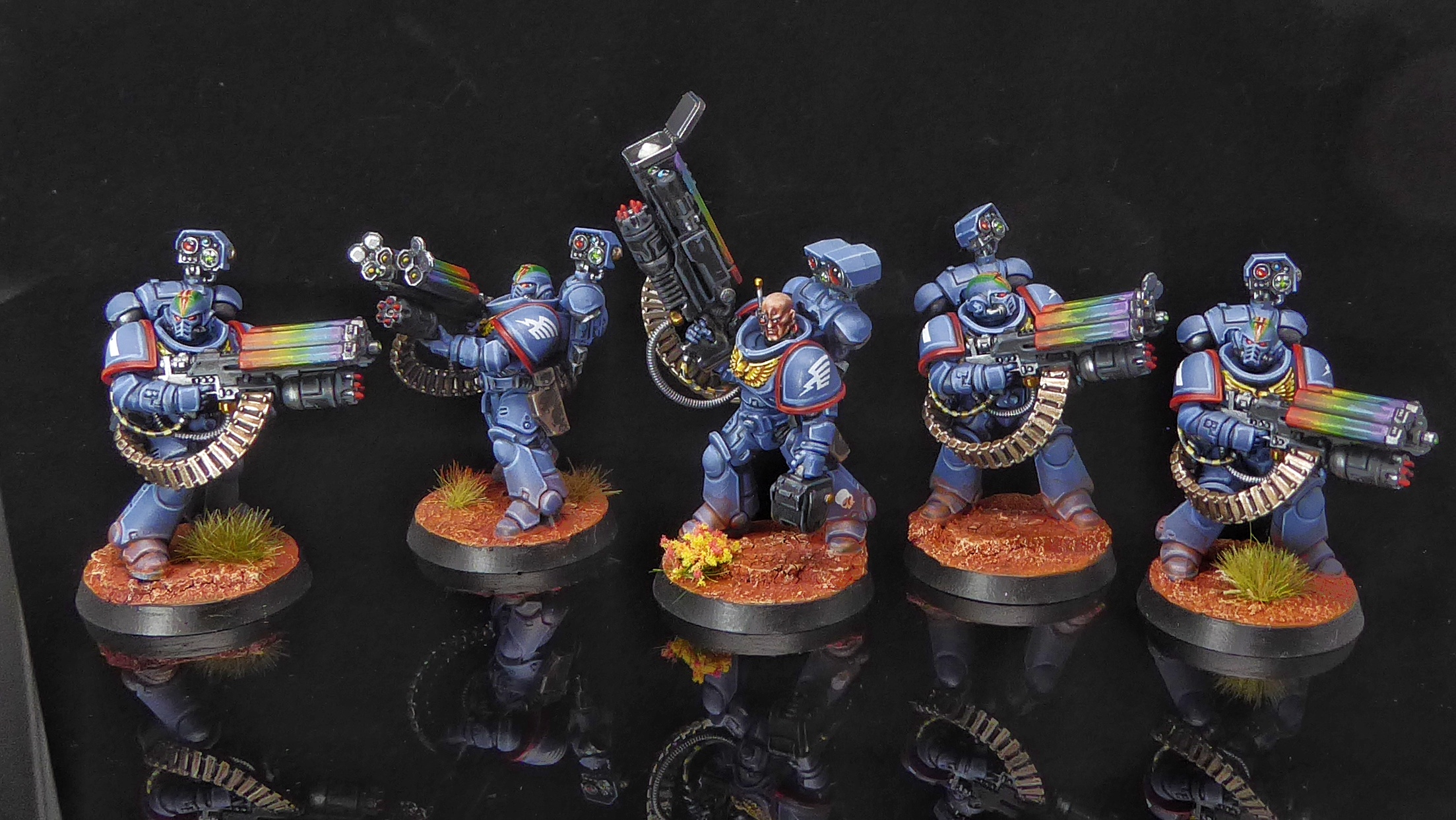
Datasheets
Look, any time you’re talking about Space Marines, there comes a point where you have to talk about datasheets and face to the bloodshed that is the sheer number of available options. There are 7 different kinds of datasheet in here just for Captains in various kinds of armour, ignoring all the ones that are named characters. In order to write a manageable review we can actually finish in time for it to be published in 10th edition, we’re going to pick and choose our highlights or the key things that jumped out to us – inevitably in an index which is 254 pages long and almost pure rules, there’s going to be something that you think is awesome that we overlooked, or a personal favourite unit of ours that you hate. Such is life, but if it made you really mad that we scandalously ignored Scout Bikes or the Hunter, please make your feelings known in a way that boosts our engagement e.g. by getting into a big argument about it in the Reddit comments.
Five Coolest Units
- Sternguard Veterans make the biggest impact coming out of the Leviathan boxed set
- Redemptor Dreadnoughts retain much of their killing power and gain a durability boost too, with a 2+ save and the retention of Duty Eternal
- “Gun tanks” generally get a big push, with the Gladiators being particular standouts – and even the Firestrike Servo-Turret has real shooting
- Land Raiders – legitimately worth taking for the first time in years
- Plenty of powerful CHARACTER options with a wide range of different buffs for Attached units
- Format-breaking bonus sixth highlight for the Imperial Fists players out there: Tor Garadon doesn’t suck!
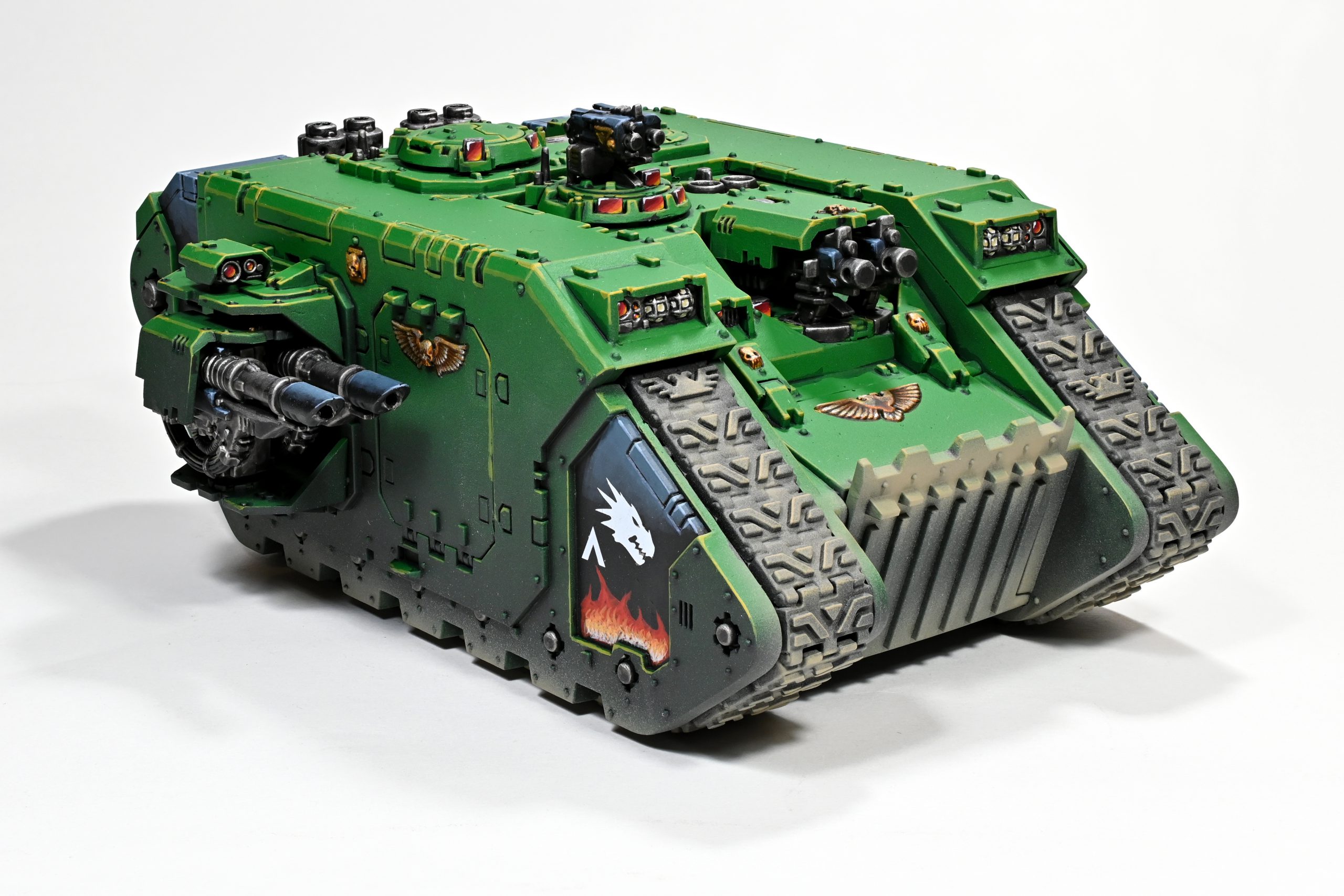
Five Biggest changes from 9th
- Lots of simplification of datasheets, with weapons being combined – there’s only one bolt rifle for Intercessors, one plasma incinerator for Hellblasters – and most controversially, only one kind of “heirloom weapon” for Vanguard Veterans
- Auras are (mostly) dead, and Leaders are in – which Leaders join which of their available units now has a huge impact on how the unit functions. In particular, psychic power and Litany choices are gone – instead each ‘type’ of character gives out a different buff, e.g. the Chaplain on foot and the Chaplain with jump pack attach to different units and give out different Litanies
- No other faction is as impacted by ‘simplified’ rules than Space Marines – gone are the 50+ Stratagems and two dozen Relics and Warlord Traits you might have picked from in the past, replaced with a streamlined set with real impact on every game
- Significant reductions in the Primaris/Firstborn split – you can throw your Aggressors into a Land Raider now, or mount Devastators in a Repulsor, and there’s no PRIMARIS-only Stratagems or the like
- The new army building rules mean that your wealth of choices are all in play – if you want to run a tank company, you can do that without having to mess around with different Detachments to jam them all in
Let’s explore all that in a little more detail.
Trying to make any comprehensive assessment of units in an index of these proportions is impossible, but there’s some general themes that stand out. One of the biggest problems for the Space Marines range has always been its sheer size, and the duplication of unit roles – when you have a dozen different units which can best be described as “a tank with a big gun” and multiple options on the niches of ‘fast melee unit’ and ‘slow melee unit’ and ‘slow melee unit with good shooting’ you end up with optimal and sub-optimal choices and the latter tend not to get a look in for most lists. The new system aims to do something about this, by giving units more distinct roles thanks to their special rules. Most datacards have something unique about them that only they do, and that’s true of both Leaders and the units they attach to. To take one example, let’s take Incursors and Infiltrators – both units which exist primarily to do Stealth Things. Fundamentally these are both units which do Stealth Things, with some minor differences in gear, but now they also have extra strings to their bows – Infiltrators retain their Omni-scramblers rule, pushing Reinforcements units further away, but they also have the Infiltrators USR now. Incursors don’t have Infiltrators now, and instead have Scouts 6” – so they can’t forward deploy any more, but can do a pre-game move. They also bring the Multi-spectrum Array, which gives +1 to Hit rolls for other units who shoot at a target the Incursors hit with their shooting. These are now quite different units, with different spins on what it means to be ‘Vanguard’ units and giving different buffs to your army.
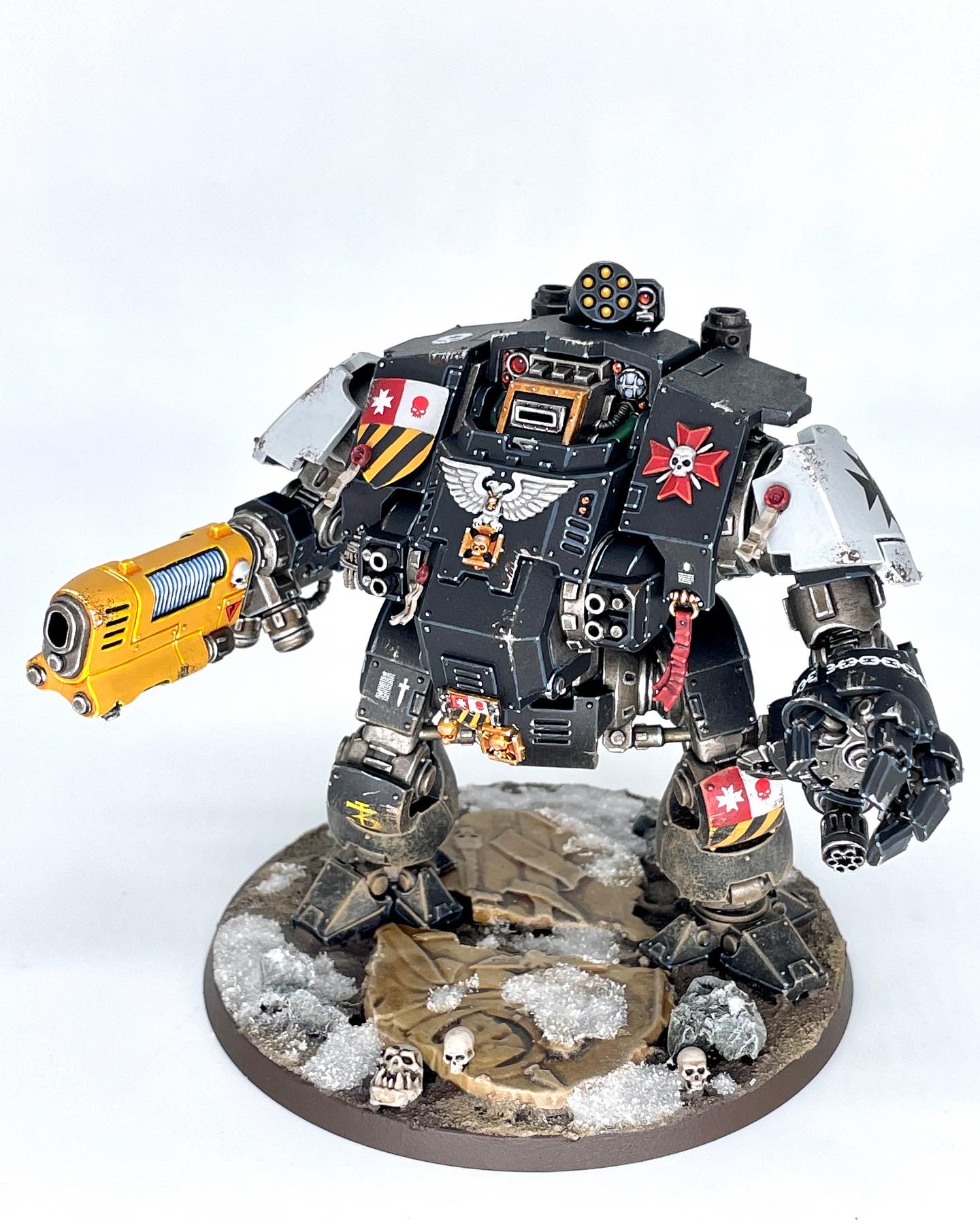
Other considerations are rules like “Combat Support” on the Invictor Tactical Warsuit, which allows the Warsuit to shoot back at an enemy unit which has just shot at some nearby PHOBOS INFANTRY. This adds some sorely-needed interaction in the opponent’s turn – always a pain point in 40k’s I go, you go turn system – but also encourages you to think about how these things go together. A Redemptor Dreadnought might offer better Toughness or strictly better shooting, but if you’re running a number of Phobos units it might be beneficial to pair the Invictor with them to get more shooting overall.
Every unit has something like this, but let’s stick to our list of highlights above. The Leviathan box brings a number of new or refreshed units to the table, ranging from the familiar Terminators to the esoteric Apothecary Biologis. Rules-wise, the pick of the bunch are the Sternguard Veteran Squad. When we’re talking about units which have struggled to make an impact in the past, Sternguard Veterans are a good demonstration of the point – fundamentally they’re always been a bolter-focused shooting unit, in a game where those just don’t achieve that much. They have seen flashes of use, but generally because of something exceptional happening to them – such as in late 9th edition where they were suddenly a flat 20pts per model and all their wargear was free, and you could take a pile of combi-meltas and heavy weapons and melee gear all for free to make an effective pseudo-Devastator squad in a different slot. The 10th edition spin on them strips away a lot of those options; instead they have an effective two choices, the Sternguard bolt rifle or the new “combi-weapon” option, which wraps up all the old combi-whatevers into a single profile with distinct rules. For every 5 models, one bolt rifle can be replaced with a Sternguard heavy bolter – and that’s it.
What these lose in choice, they gain in effectiveness. The Sternguard bolt rifle mirrors the new Intercessor profile, with the ASSAULT and HEAVY rules, but also gains RAPID FIRE 1 for extra shots at half range as well as DEVASTATING WOUNDS – which Sternguard heavy bolter also picks up. That gives them a lot of output, especially into a target with Oaths of Moment applied. In addition, they have the Bolter Drill rule – which allows them to shoot again, once per battle, if they destroy an enemy unit. This is all great stuff, and makes them legitimately dangerous in a way that “Veterans with bolters” have generally never been before. This also combos well with the new FIRING DECK rule, because they can now blast away from inside of an Impulsor, giving them substantial protection and ability to get around the table.
On that same shooting theme, there’s a lot of good things to talk about with the vehicles in the index. The Gladiator chassis was much-improved by the end of 9th edition thanks to some drastic points cuts, and they have great rules here too – and it’s not just them, as Predators and even Vindicators look like they have real worthwhile shooting to contribute. Storm Speeders also add some punch, not only with their own guns but also with their special rules – for example, the Hailstrike can now pick one enemy unit which it hit in the Shooting phase, and all of your units which target that unit improve their AP by 1. Going the other way, there are a number of vehicles which benefit from the new approach to Toughness values – none more than the Land Raider, which now boasts a mighty Toughness 12, making it a legitimately hard target (as a useful reference point, its own lascannons are S12, so even many of the higher-Strength weapons in the game are likely to wound it on 4s at best). It also comes with an Assault Ramp, allowing units to disembark and charge – massively increasing the threat range of your Terminators, or even Centurions.
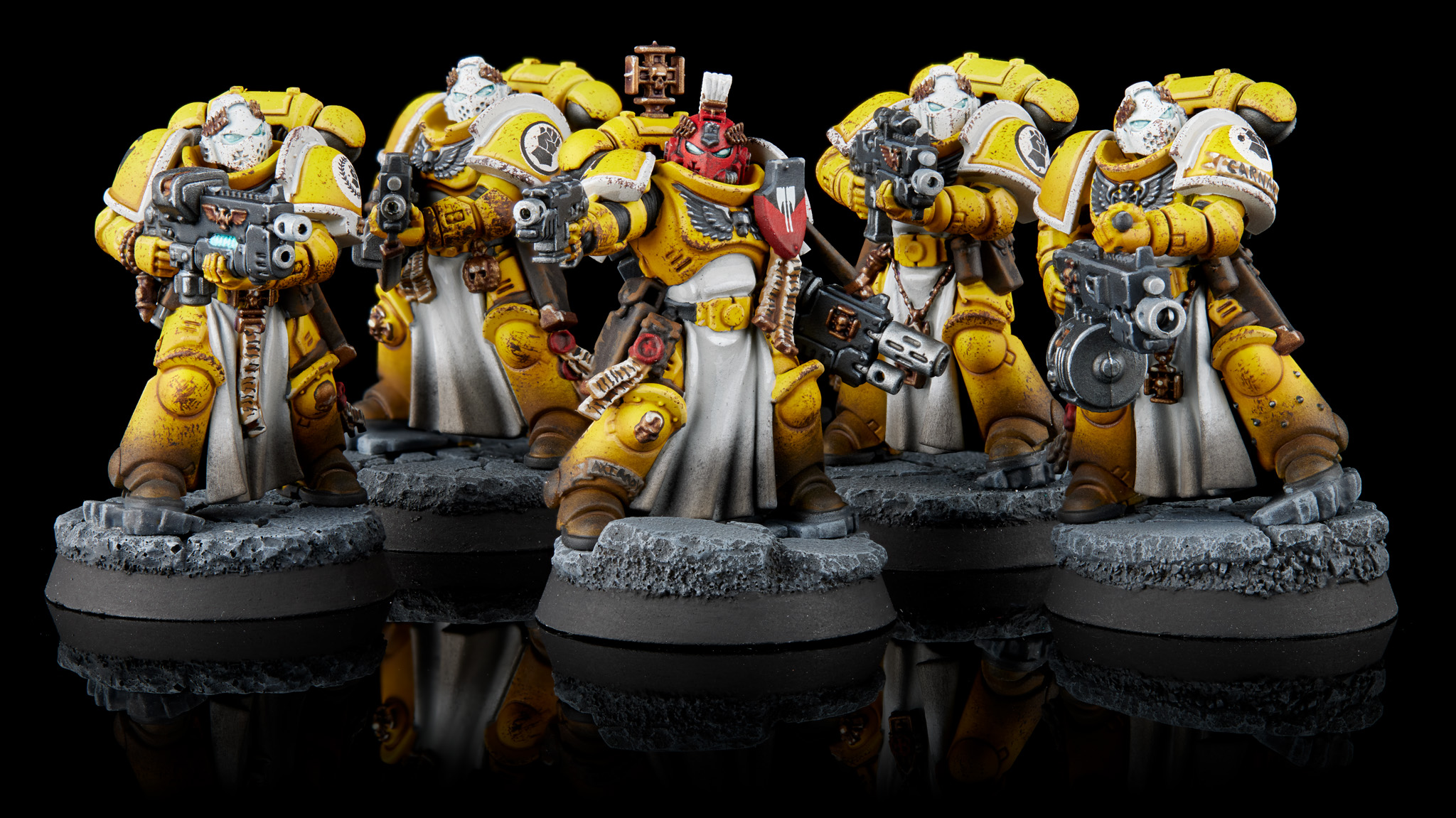
Walker-wise, the Redemptor Dreadnought (and its cousins the Ballistus and Brutalis Dreadnoughts) gain a 2+ save, significantly improving their defensive profile. Duty Eternal is now a Redemptor-specific rule, with the Ballistus getting a shooting-based buff instead and the Brutalis a Hammer of Wrath-type rule to do mortal wounds on the charge. The Wisdom of the Ancients Stratagem from 9th edition rears its head again, but only as a special rule for the classic box Dreadnought – giving it a new role as a buffer to things around it, and a point of differentiation from its younger, bigger counterparts (though there’s one point of note here – the Venerable Dreadnought doesn’t exist in the index, with only the regular one making an appearance. This is slightly confusing given the recent Warhammer Community article sending the old kit to Last Chance to Buy purgatory and suggesting you use the model as a Venerable one – no word on how these two things add up at this time).
Let’s close out with a look at some of the many characters available to Marines. As mentioned above, there are different datasheets for each individual “type” of character – so the basic Chaplain and the Primaris Chaplain and the Chaplain in Terminator armour and the Chaplain on bike and the Chaplain with jump pack are all separate sheets with their own statlines, rules etc. and they can join different units with little overlap. This means that they give out quite different buffs, impacting different units. All Chaplains share the Litany of Hate, giving their unit (and themselves) +1 to Wound rolls with melee attacks, but their second rule differs between each sheet – so the basic Chaplain and Primaris Chaplain on foot have Spiritual Leader, allowing them to remove Battle-shock from a nearby unit once per battle, while the Chaplain on bike has the Catechism of Fire, which gives the Chaplain’s unit DEVASTATING WOUNDS against one chosen enemy unit within 12”.
Most of the time you can only attach one character to one unit, to minimise the stacking of these buffs, but there are a couple of exceptions – Lieutenants can join units a Captain or Chapter Master has already been attached to, for example, and Apothecaries can join units led by a Lieutenant – though you can’t katamari them all together, so there’s still a hard limit on the number of buffs a single unit can benefit from.
One particularly powerful effect comes from the basic Primaris Captain, in the form of Rites of Battle, which once per battle round allows you to target his unit with a Stratagem for 0CP – and even use that Stratagem again if you already used it this phase. This gives his unit a huge range of options, whether that’s repeat usage of Overwatch or Armour of Contempt, or making a high-cost move for free when an opponent might count on you having too few CP available such as using Counter-offensive or Heroic Intervention.
Finally, let’s talk about the named characters. Again, there are a ton of these guys hanging around from earlier editions, but let’s pick two to focus on. The first is the biggest name in the range, Roboute Guilliman, headlining the index in all his Primarch glory. The Imperial Regent now boasts Toughness 9, putting him in the same weight class as many vehicles, and retains his Armour of Fate allowing him to set back up again on a 3+ after being destroyed. He isn’t a Leader and can’t attach, instead becoming a Lone Operative while he’s within 3” of any ADEPTUS ASTARTES INFANTRY. He’s tough, his damage output is great, but the particular unique effect he brings is Author of the Codex, a rule which allows him to pick from one of three options in each Command phase – you can select either an aura which boosts Objective Control, the Master of Battle rule that lets you pick a second Oaths of Moment target which turns on if the first target has been destroyed, or the ability to target a friendly ADEPTUS ASTARTES unit within 12” with a free Stratagem which, like the Captain, you can use even if another unit has already done so.
Our other highlight is, as trailed earlier, Tor Garadon. I suspect many readers will have forgotten this guy even exists, since he landed in 9th edition with a gigantic thud (thanks to his Gravis armour) and never really made it to tables. He is now legitimately great, being able to attach to the units you would expect (Heavy Intercessors, Aggressors, and importantly Eradicators) and giving them the huge buff of applying both LETHAL HITS and IGNORES COVER to their ranged attacks. The Eradicator combo is particularly spicy, because their ability is to re-roll Hit, Wound, and Damage rolls against VEHICLE and MONSTER units – which Garadon benefits from too if he’s in their unit, though his weapons have fixed Damage. The rest combos well with his Siege Captain rule, which gives his attacks +2 Strength, Armour Penetration and Damage against – you guessed it – VEHICLE and MONSTER units (and FORTIFICATIONS, naturally) – so suddenly his artificer grav-gun is hitting and wounding vehicles on 2s at AP-3 and damage 4. Who needs Oaths? As a bonus, his melee profile is good on baseline – 5 attacks at WS2+, S12, AP-2, D2 – and Siege Captain applies to them as well, so if he gets into a Dreadnought or Knight or something they’re suddenly S14 AP-4 D4. Imperial Fists players haven’t had too much to celebrate in the last couple of years, but Tor becoming a real option you’d want to put on the table is certainly something.
Wrap Up
There is so much more to cover in this index – there’s whole sections we’ve barely scratched the surface of – but for now, let’s summarise. The key theme here is that your Space Marines now have a much sleeker, more purposeful set of rules – just one faction rule, one Detachment rule, a handful of Stratagems – and there’s been some real thought applied to how to get the best out of each datasheet and make it do something distinct that separates it from the mass of other units around it.
It’s not all rosy, of course. There’s some weird interactions in here – Hellblasters with their HAZARDOUS plasma incinerators can kill their own Impulsor, get out, and then fire again (because it was the Impulsor which shot, not them – an interaction that can happen in many places but which is much more unlikely in units that don’t have FIRING DECK 6 and massed Hazardous). There are inevitably some losers, and units which won’t see much play – nobody has yet gotten excited about Reivers, sadly, though I’m sure that having said this someone will immediately start running a GT-winning list with 30 of the buggers. The huge variety of special rules also adds a layer of complexity – you might not need to remember two books’ worth of Stratagems, but you’ll be kicking yourself if you forget that your Ballistus Dreadnought could have re-rolled Hit rolls against the vehicle it just shot, and with every unit having one or two different things it can do – and Leaders attaching to units adding more – you will desperately need the cards in front of you to keep track of everything, for your own benefit and for your opponent’s. There’s also the matter of similar units having significantly different rules – Assault Squads on foot have a completely different special rule to Assault Squads with jump packs, and Librarians and Terminator Librarians give their attached units completely different buffs – and the potential for confusion (or “confusion”) this creates.
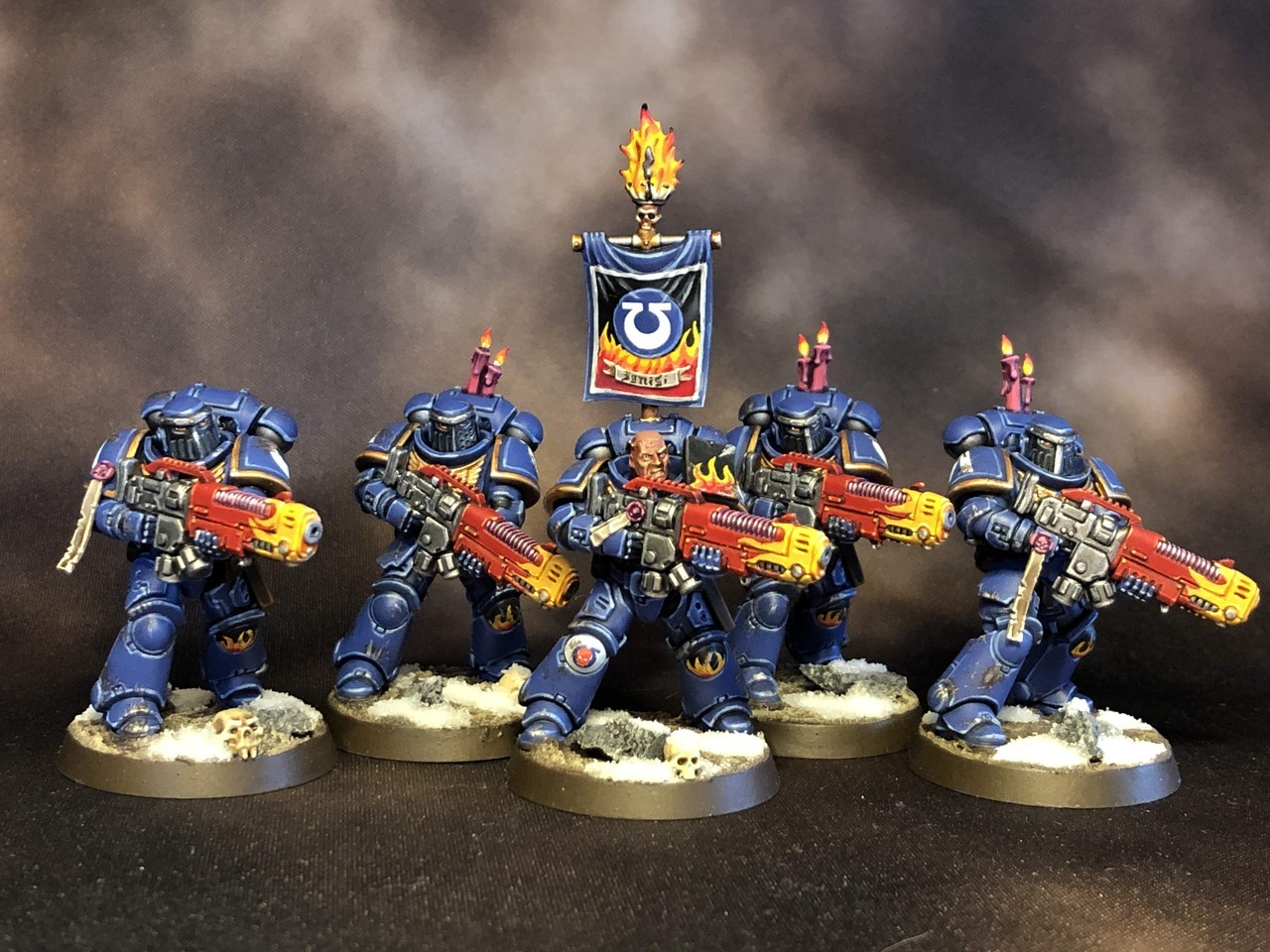
There’s also one or two units that you look at and wonder what the thinking was. Let’s take Desolation Squads, the scourge of very late 9th edition – their guns are better with new Blast, and their special rule is that if they Remained Stationary (which they often will, because they’re sat in a backfield ruin firing out), they can ignore all the penalties for Indirect Fire – indeed not just ignore the penalties, they specifically gain IGNORES COVER, so they not only aren’t negatively impacted they get a positive buff too. After an edition where indirect shooting caused problems multiple times, it doesn’t feel great to see one of the biggest offenders (albeit one which probably had its day after these cards went to print) given a rule to ignore all the restrictions that are meant to tone them down.
At the other end of the spectrum, there’s Vanguard Veterans, where literally all of their weapon options have been squashed into the “heirloom weapon” profile, a deeply mediocre 4 attacks at S5 AP-1 D1. Yes, Vanguard Veterans were pretty good in 9th, and yes it was a bit of a problem that they had so many weapon options and you’d typically have one, single weapon that was optimal for them to run, invalidating all others – which doesn’t feel great if you built them with the wrong one, or if you did but now it’s changed and you need to carve up painted models or buy replacements (or magnetise). But it’s weird to compress all their possible, and very dissimilar, former choices – all of which are weapons that are common in the rest of the army – into a single statline, and one that’s very poor. The same logic hasn’t been applied to the shooting side, for some reason, where you can still choose from multiple different pistols for anyone who cares to carry them. There’s the added weird aspect that Vanguard Veterans are one of the very few kits that actually come with all of their options, and enough of them that you can reasonably outfit a squad with whatever you wanted – meanwhile Devastators can still take 4 of any gun they like, even though you only get 2 of each in the box.
These kinds of compromises and oversights are probably inevitable in a project like this, where the design team has had to write whole new entries for all of the thousand or so unit entries in the game, and it’s not the first time that GW has inexplicably ignored or buffed a strong unit while turbo-nuking another for balance crimes committed several years ago. There’ll be other considerations, too – to pick on them again, Devastators have always been able to take all the heavy weapons, and someone somewhere likes that just fine and never wants it changed, but isn’t so stubborn on Vanguard Veterans. Ultimately this is still a really good set of rules in the main, and a much more complete, playable product than the indexes of 8th edition – which is what some people seemed to fear would be returning, based on the name. Space Marine players will get a ton of value out of what’s here, and hopefully should find some of their favourite choices revitalised, or new possibilities opening up from long-neglected entries they’re used to flicking past.

